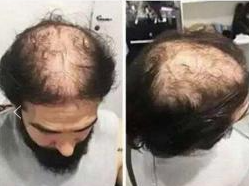
Hair loss is often accepted as a normal, if frustrating, part of aging. We expect a receding hairline or a gradually widening part. But when hair loss is sudden, rapid, and follows a specific, unusual pattern, it’s not just about getting older. It’s a billboard your body is erecting to announce an internal imbalance.
Sudden hair loss is almost never a standalone event. It is a symptom, a visible cry for help from systems that are struggling to regulate themselves. When this loss concentrates in three specific areas, it becomes a powerful diagnostic clue that your hormones are in a state of rebellion, specifically pointing to thyroid dysfunction, androgenic shifts, and high cortisol.
Let’s decode the map of your scalp and what it reveals about the hormonal war within.
Area 1: The Outer Third of Your Eyebrows (The “Madarosis” Sign)
This is one of the most telling signs in all of medicine. When the outer third of your eyebrows begins to thin out or disappear entirely, it’s a classic, textbook sign of an underactive thyroid, or hypothyroidism.
- The Hormone at Play: Thyroid Hormone (T3/T4). Think of thyroid hormone as the master regulator of your metabolism. It controls the energy production of every single cell in your body, including the hair follicle.
- What’s Happening: When thyroid levels are low, the metabolic engine of the hair follicle slows to a crawl. The growth (anagen) phase is cut short, and hairs are shed prematurely. The follicles on the outer eyebrow are particularly sensitive to this drop in energy, often being the first to go quiet. This isn’t just about vanity; it’s a direct visual indicator that your body’s fundamental energy thermostat is set too low.
Area 2: The Top of Your Head & Temples (Female/Male Pattern Thinning)
When hair thins dramatically at the crown and along the part in women, or recedes at the temples and thins on top in men, the primary culprits are a group of hormones called androgens, most notably dihydrotestosterone (DHT).
- The Hormone at Play: Androgens (Testosterone/DHT). In both men and women, these “male” hormones are normally present. However, when there’s a genetic sensitivity or a shift in their conversion (more testosterone turning into the more potent DHT), they begin to miniaturize sensitive hair follicles.
- What’s Happening: DHT slowly shrinks the follicle, making it produce thinner, shorter, and less pigmented hairs with each growth cycle. Eventually, the follicle becomes so small it stops producing hair altogether. A sudden worsening of this pattern can be triggered by major hormonal shifts like menopause in women, where dropping estrogen levels allow the effects of androgens to become more pronounced.
Area 3: Diffuse Loss All Over the Scalp (Telogen Effluvium)
This is the most common type of sudden hair loss. You’re not seeing bald spots, but you find handfuls of hair in the shower drain, on your pillow, and in your brush. Your ponytail feels thinner, and your scalp might feel more visible all over. This points directly to the stress hormone, cortisol.
- The Hormone at Play: Cortisol. In an acute crisis, cortisol is life-saving. But when stress becomes chronic, consistently high cortisol levels wreak havoc on the hair growth cycle.
- What’s Happening: Chronic high cortisol pushes a massive number of your hair follicles from the active growing phase (anagen) directly into the shedding phase (telogen). About three months after a major stressor (hence the “sudden” discovery), all these synchronized follicles shed at once. The stressor can be emotional (grief, work pressure) or physical (major surgery, a severe illness, rapid weight loss, or a new medication).
The Vicious Cycle of Hormonal Hair Loss
Often, these three areas are connected. For instance, the metabolic slowdown of hypothyroidism (Area 1) is a significant physical stressor on the body, which can then trigger a massive shed from high cortisol (Area 3). Furthermore, thyroid imbalance can exacerbate underlying genetic hair loss (Area 2).
What to Do When You See the Pattern
- Don’t Just Buy a Special Shampoo. Topical solutions cannot fix a systemic hormonal problem.
- See Your Doctor and Demand a Full Panel. This is crucial. Ask for tests for:
- Thyroid-Stimulating Hormone (TSH), Free T3, Free T4
- Ferritin (a storage form of iron; deficiency is a major cause of hair loss)
- Vitamin D
- Testosterone, DHEA-S, and Prolactin (to assess androgens)
- Address the Stressor. For cortisol-related loss, this means committing to stress management as if your hair depends on it—because it does. Prioritize sleep, explore meditation or yoga, and set firm boundaries.
Sudden hair loss in these three specific areas is your body’s way of making an invisible internal conflict visible. It is a powerful signal that your hormonal symphony is out of tune. By listening to this signal and seeking the root cause, you’re not just fighting for your hair—you’re taking a critical step toward restoring your body’s fundamental balance and reclaiming your vitality.